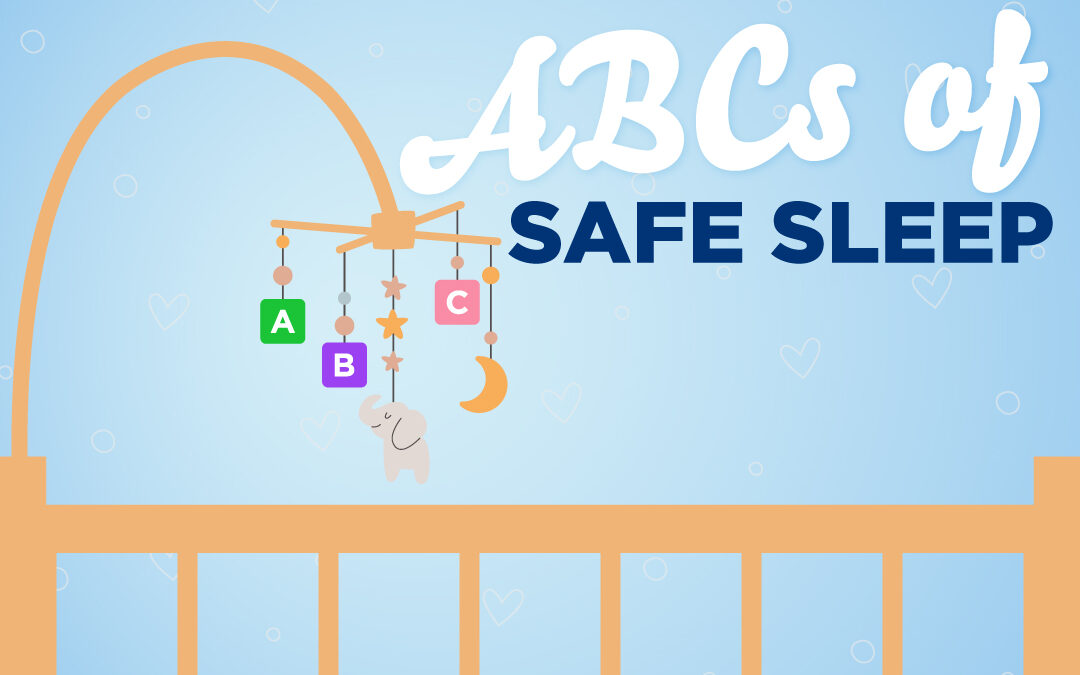Every day in the United States, approximately nine babies die from Sudden Unexpected Infant Death (SUID). While this statistic is alarming, following safe sleep practices can prevent many tragic losses. As parents, understanding and implementing these guidelines is one of the most important things we can do to protect our little ones.
Understanding the Risks
Scientists use what’s called the “Triple Risk Model” to explain why some babies are more vulnerable to sleep-related deaths. This model shows how three factors can combine:
- A critical developmental period
- A potentially vulnerable infant
- External stressors (like sleep position or environment)
The ABCs of Safe Sleep
A – Alone
Your baby should have their own sleep space. While it’s recommended to share your room with your baby for at least the first six months, bed-sharing significantly increases risks:
- 3x higher risk of SIDS
- 2.5x higher risk of sleep-related suffocation
- 2.1x higher risk of unexplained infant death
These risks increase further when combined with factors like:
- Sleeping on a couch or armchair
- Parental smoking
- Maternal alcohol or drug use
B – Back
Always place your baby on their back to sleep. While supervised “tummy time” is important during awake hours (aim for 15-30 minutes total by 7 weeks of age), back sleeping is safest for sleep.
C – Crib
Use a firm, flat sleep surface that meets current safety standards in a crib, bassinet, or pack ‘n-play. The sleep surface should not be inclined more than 10 degrees from the horizontal.
Products to Avoid
Recent safety regulations have banned or restricted certain products, but it’s important to know what to avoid:
- Inclined sleepers (now illegal)
- Weighted blankets
- Baby hammocks
- Baby boxes
- In-bed sleepers
- Baby nests and pods
- Car seats for routine sleep (most are inclined 40-45 degrees)
Tips for Exhausted Parents
We know you’re tired! Night feedings can be exhausting, but there are ways to keep your baby safe:
- If you feed your baby in bed, have someone stay awake with you
- Remove loose bedding, pillows, and comforters before feeding
- Never feed your baby on a sofa or armchair if you’re feeling sleepy
- Always place your baby back in their safe sleep space before you fall asleep
Creating a Safe Sleep Environment
To create the safest sleep space:
- Use a firm mattress with a fitted sheet only
- Keep the crib bare – no blankets, pillows, bumpers, or toys
- Maintain a comfortable room temperature and dress your baby appropriately (consider using a sleep sack instead of blankets)
- Place the crib in your room, away from windows and cords
- Ensure there are no gaps between the mattress and crib walls
When to Seek Help
If you’re struggling to provide a safe sleep space, resources are available:
– Many communities offer free pack ‘n plays to families in need. Erlanger and Hamilton County Health Department both offer pack-n-play options for families in need.
– Local health departments often host “community baby showers” with safe sleep education and resources
– Healthcare providers can connect you with additional support and resources
Erlanger offers a wide selection of support groups and classes, including childbirth education, breastfeeding classes, baby care, and safety classes. It also connects first-time mothers with a registered nurse for support and advice.
While social media may show trendy nursery setups or alternative sleep arrangements, remember that the safest sleep practices are often the simplest. When in doubt, always follow the ABCs of safe sleep: Alone, on their Back, in a Crib.
Remember: Every sleep time counts – naps and nighttime. Consistently following safe sleep guidelines is one of the most important ways to protect your baby.







